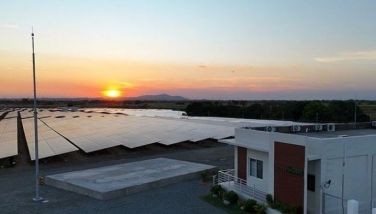Tropic thunder
(Last of two parts)
There are two questions I am often asked by beginning growers. One is: what is the difference between a succulent and a cactus? The simplest way to answer that is to explain that all cacti are succulents, meaning they are water-retaining plants adapted to arid climate or soil conditions around the world, but not all succulents are cacti. Cacti are a subset of succulents.
You may have a succulent in your garden and not know it. Or the garden dishes you see in plant stores, suitable for both indoor and outdoor, may contain one or two succulent species — aloe and agave are just two of the most common species in the country. Succulents have the appearance of swollen leaves, thanks to their ability to retain water, hence they are also known as “fat plants.” They store water in their stems, roots or leaves. Leaves turning brown are often an indication of being suddenly exposed to too much direct sunlight.
Continuing the theme of adaptation from the last column, succulents collect and store water to survive long, dry periods in the topics or subtropics, in semi-desert and desert around the world. They may be survivors, and growers like to describe them as “nearly indestructible,” but in my 30 years of growing (and killing) plants in the Philippines and in the US, I’ve found out that even succulents can suddenly — or slowly and beyond repair — die on you, too.
 The second question I am asked is: how do you then care for succulents in a tropical country like ours? After all, most succulent species are from Africa, not Asia. But most succulents will thrive here under human care. Some sensitive species from very arid and hostile environments will require culture similar to that for cacti.
The second question I am asked is: how do you then care for succulents in a tropical country like ours? After all, most succulent species are from Africa, not Asia. But most succulents will thrive here under human care. Some sensitive species from very arid and hostile environments will require culture similar to that for cacti.
Other succulents in the tropics must be adapted to conditions in the tropics. Just like choosing the ideal real estate investment, growing succulents is about location, location, location! Succulents should be exposed to as much direct sunlight and free air flow as possible. They also need protection from the rain and require varying levels of shading. Location will determine the selection of other succulents one can grow — the more ideal, the increased variety of other succulents can be grown successfully.
For potting, use porous clay pots instead of plastic (though you can get away with plastic sometimes). Use a mixture of 1/4 sandy loam, 1/4 good quality compost, 1/4 washed river sand and 1/4 pumice. For extra-sensitive species like Trichaucolon, use the recommended growing mix for cacti.
Most succulents will require feeding similar to cacti; others won’t require feeding at all. Generally, other succulents require more moisture; some can be watered practically every day while others should be watered only once a week, just like cacti.
For the bulk of other succulents, a regimen of watering twice a week throughout the year works well. Use a 25-percent solution of fertilizer with every other watering during the growing period; low nitrogen is ideal to growing happy, healthy succulents.
* * *
E-mail the author at succulentophile@yahoo.com.



















